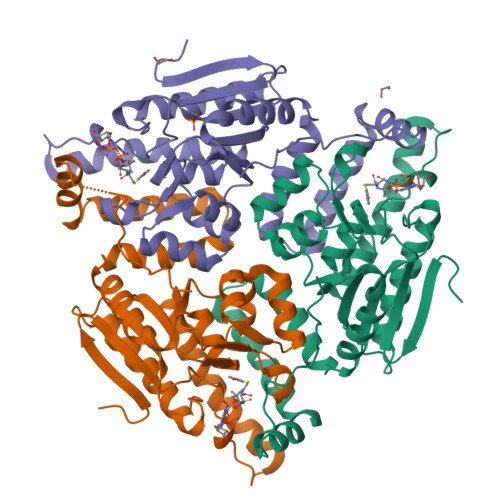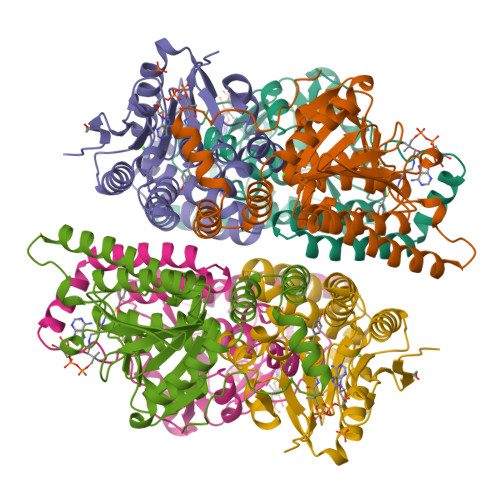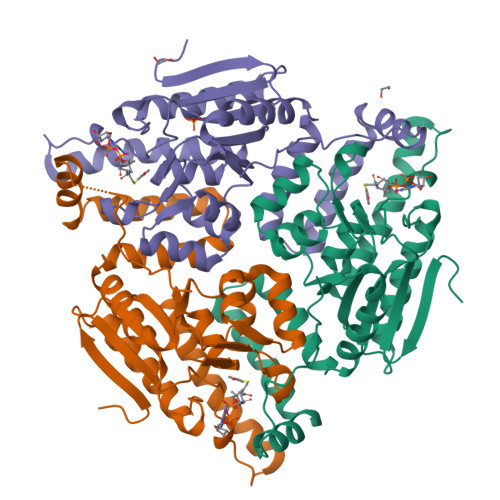Structure of 4-chlorobenzoyl coenzyme A dehalogenase determined to 1.8 A resolution: an enzyme catalyst generated via adaptive mutation.
Benning, M.M., Taylor, K.L., Liu, R.-.Q., Yang, G., Xiang, H., Wesenberg, G., Dunaway-Mariano, D., Holden, H.M.(1996) Biochemistry 35: 8103-8109
- PubMed: 8679561
- DOI: https://doi.org/10.1021/bi960768p
- Primary Citation of Related Structures:
1NZY - PubMed Abstract:
Here we describe the three-dimensional structure of 4-chlorobenzoyl-CoA dehalogenase from Pseudomonas sp. strain CBS-3. This enzyme catalyzes the hydrolysis of 4-chlorobenzoyl-CoA to 4-hydroxybenzoyl-CoA. The molecular structure of the enzyme/4-hydroxybenzoyl-CoA complex was solved by the techniques of multiple isomorphous replacement, solvent flattening, and molecular averaging. Least-squares refinement of the protein model reduced the crystallographic R factor to 18.8% for all measured X-ray data from 30 to 1.8 A resolution. The crystallographic investigation of this dehalogenase revealed that the enzyme is a trimer. Each subunit of the trimer folds into two distinct motifs. The larger, N-terminal domain is characterized by 10 strands of beta-pleated sheet that form two distinct layers which lie nearly perpendicular to one another. These layers of beta-sheet are flanked on either side by alpha-helices. The C-terminal domain extends away from the body of the molecule and is composed of three amphiphilic alpha-helices. This smaller domain is primarily involved in trimerization. The two domains of the subunit are linked together by a cation, most likely a calcium ion. The 4-hydroxybenzoyl-CoA molecule adopts a curved conformation within the active site such that the 4-hydroxybenzoyl and the adenosine moieties are buried while the pantothenate and pyrophosphate groups of the coenzyme are more solvent exposed. From the three-dimensional structure it is clear that Asp 145 provides the side-chain carboxylate group that adds to form the Meisenheimer intermediate and His 90 serves as the general base in the subsequent hydrolysis step. Many of the structural principles derived from this investigation may be directly applicable to other related enzymes such as crotonase.
Organizational Affiliation:
Department of Biochemistry University of Wisconsin, Madison 53705 USA.






















